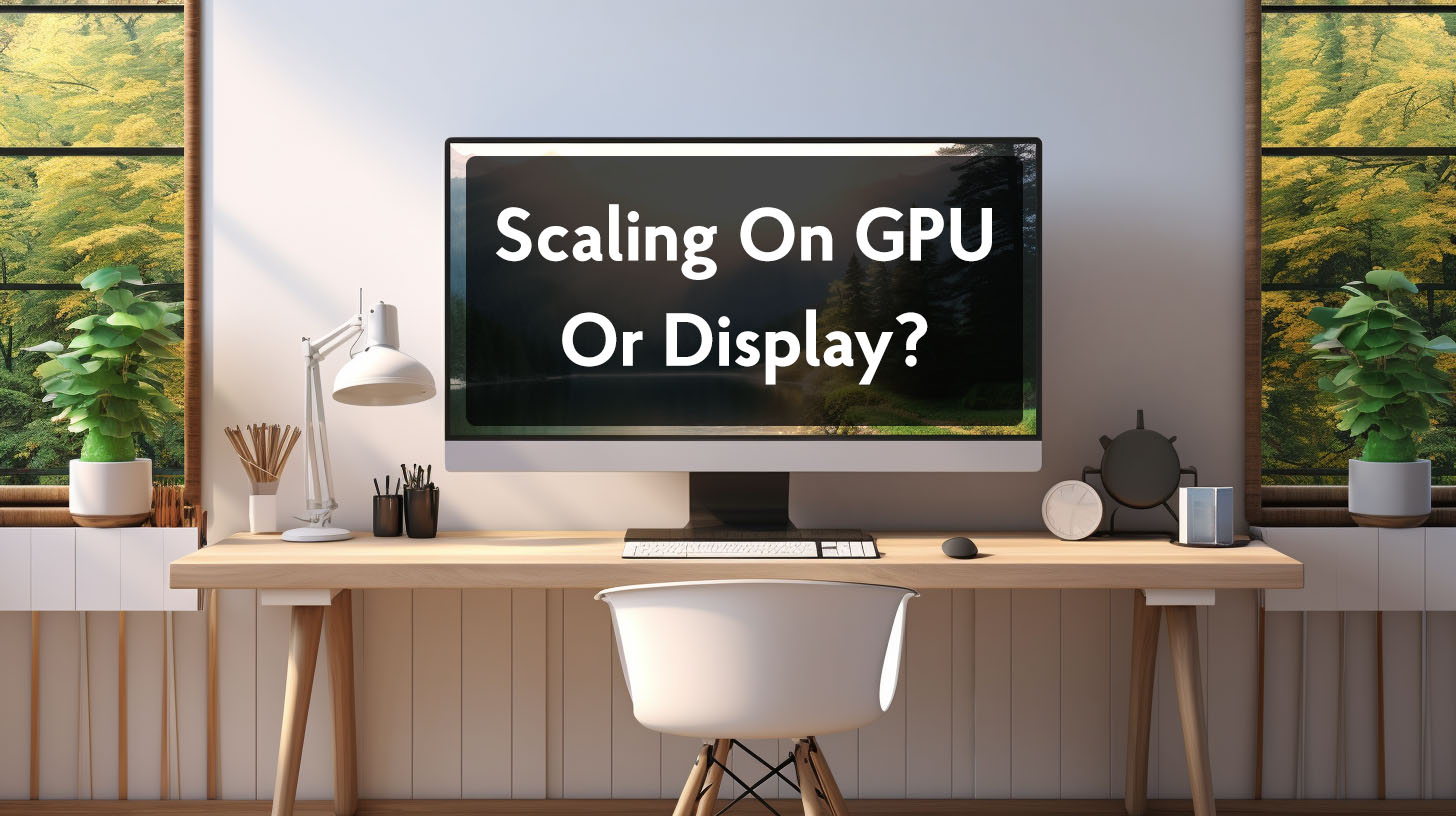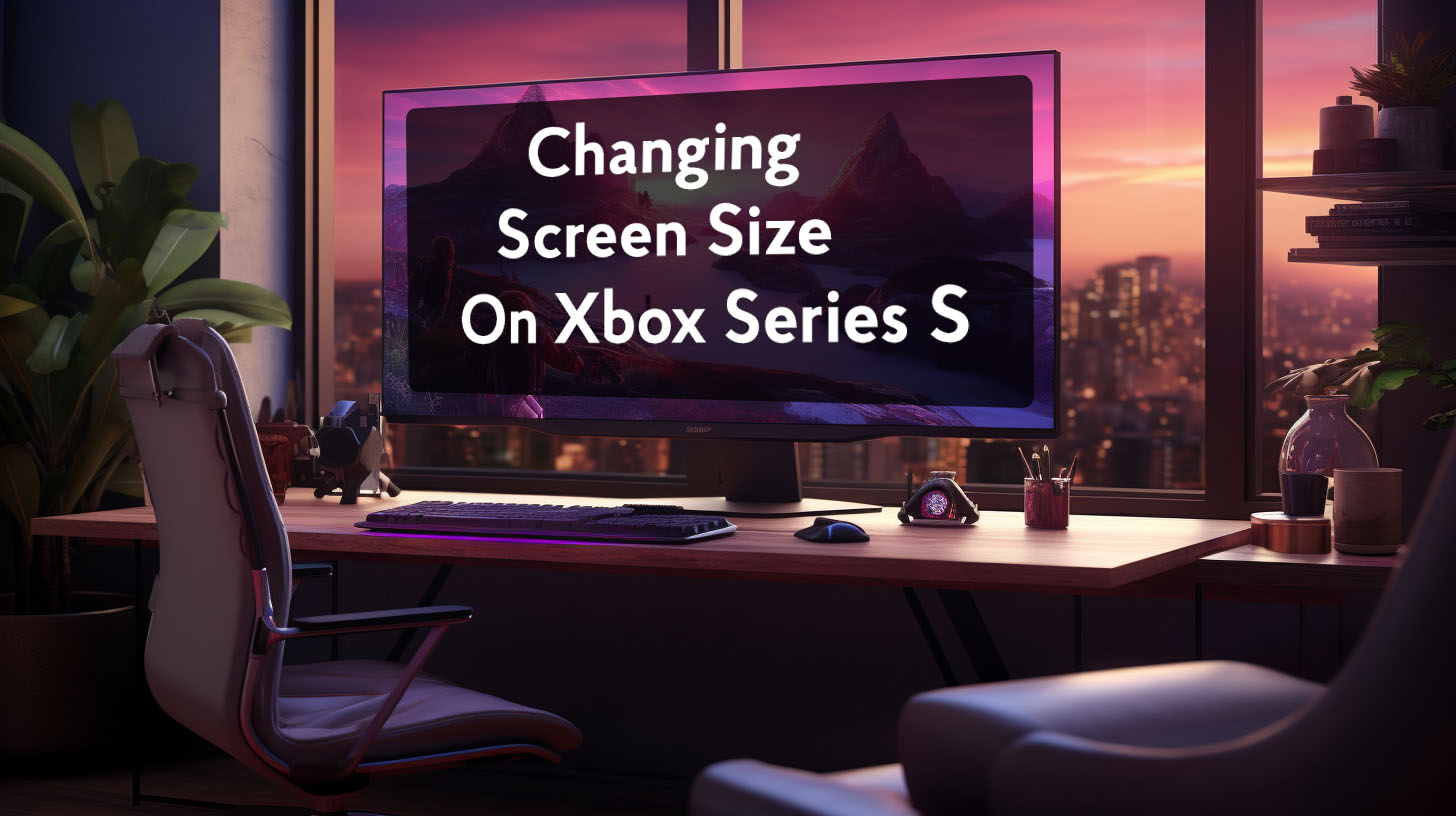IPS (in-plane switching) is a display technology known for its wide viewing angles and color accuracy. Traditional IPS panels have struggled to match the contrast ratios of rival VA (vertical alignment) and OLED (organic light emitting diode) technologies, typically measuring around 1000:1.
This results in weaker black levels and a reduced “pop” factor compared to VA and OLED. However, IPS excels in other areas like response times, making it a popular choice for gaming and professional monitors. The consistent image quality at off-center angles also suits creative work and office environments with multiple viewers.
While recent IPS variants like AHVA (advanced hyper-viewing angle) have brought minor improvements, IPS contrast has remained relatively stagnant over the years.
IPS Monitors on Black and Dark Scenes
The mediocre native contrast ratio of around 1000:1 leads to IPS monitors displaying darker shades in a washed-out grayish manner instead of true blacks. This causes black and dark scenes to lose depth and detail. When an IPS display tries to depict shadows or nighttime environments, the areas end up looking murky and indistinct.
To compensate, users often raise monitor brightness which leads to more obvious IPS glow and backlight bleed. VA and OLED screens maintain their contrast integrity even at lower brightness levels. So media consumption and gaming on IPS can prove frustrating, especially in darker room lighting.
Many enthusiasts choose VA alternatives like the Samsung Odyssey lineup for their heavy contrast and vivid images. But these VA options also bring trade-offs like color shifting or smearing issues.
IPS Black Technology
What is IPS Black?
IPS Black is a new generation of IPS technology unveiled by LG Display in early 2022. It uses undisclosed improvements in IPS pixel structure to double native contrast ratios to around 2000:1 while retaining wide viewing angles. This allows IPS Black to deliver much deeper black levels approaching those of VA monitors, while keeping iconic IPS strengths like color accuracy.
Key Benefits Over Traditional IPS
By enhancing light transmission control, IPS Black can display blacks that are up to 35% darker than conventional IPS. This gives significant gains in detail and depth for dark scenes. The boosted 2000:1 contrast also increases the overall image “pop”.
IPS Black maintains the stable off-axis viewing that IPS is loved for, reducing color and gamma shifts when viewed from wider angles like in multi-user office settings. It aims to bring the best of IPS and VA worlds together.
Recent Developments
LG Display manufactures IPS Black panels in 27-inch 4K and 32-inch 4K variants. Dell and LG monitors were the first to integrate IPS Black displays in early 2022, though restricted to 60Hz refresh rates for now. Reviewers have validated the improvements in contrast ratio and black levels.
Competitor BOE also previewed its own “True Black” IPS tech to rival LG’s offering. If IPS Black receives positive market reception, higher refresh rate options catering to gamers could potentially arrive later.
Real-World Performance
Lab tests demonstrate IPS Black’s contrast ratio hitting up to 2000:1, a 74% jump over standard IPS monitors tested alongside. This advantage translates to visibly enhanced black depth and shadow details in dark scenes.
But the off-angle glow or “IPS glow” remains similar to older IPS generations. Overall, IPS Black delivers substantial gains in a key IPS weakness – black reproduction. But fully matching modern VA or OLED tech still requires further enhancements.
Dell UltraSharp U3223QE: A Benchmark in IPS Black
Features and Specs Overview
The Dell UltraSharp U3223QE is one of the first monitors incorporating an IPS Black panel. This 31.5″ 4K screen touts a wide color gamut, USB-C connectivity, KVM switch, and a refreshed aesthetic with small bezels. It retails around $1300, pitched as a premium office monitor. But the key highlight is its IPS Black panel promising up to 2000:1 contrast, over 2X conventional IPS ratios.
Testing the IPS Black Performance
Reviewers rigorously tested the IPS Black performance on the U3223QE against other IPS panels. The Eve Spectrum 4K with a regular LG IPS, Cooler Master GM32-FQ with BOE ADS IPS, and Nixeus NX-EDG274K with AUO AHVA IPS were used for comparison and calibrated consistently. The goal was to examine real-world contrast and black level achievements.
Contrast Ratio Results
Lab measurements showed the U3223QE’s IPS Black panel hitting around 2000:1 contrast, in line with its specs. This was a massive 74% increase over the 1300:1 averaged by the other IPS monitors tested against it. The visual tests also revealed noticeably improved black depth on the IPS Black Dell screen.
Visual Comparisons
Setting all monitors to full black, the IPS Black Dell monitor showed the deepest black shade and least glow or clouding from any angle. The other IPS panels exhibited more obvious grayness and clouding when presenting full black images, underscoring their weaker contrast. The IPS Black panel delivered genuine visual improvements in black level.
Black Depth and Its Significance
Viewing Angle Performance
While the IPS Black panel showed better on-axis black depth than rivals, its viewing angle glow and color shift remained similar to other IPS panels. There was no noticeable viewing angle advantage over standard IPS. This reveals an area requiring further enhancements by LG Display.
Off-Angle Glow Observations
When viewed slightly off-center, the IPS Black Dell monitor demonstrated similar IPS glow to the other IPS competitors. There were no major improvements in the off-angle glow phenomenon that IPS is infamous for. This indicates LG still has work to do in this regard to compete with modern VA monitors having vastly reduced glow.
Concluding IPS Black Achievements
In closing, the IPS Black technology undoubtedly attained its goal of boosting IPS contrast ratios and black depth closer to VA monitor levels while retaining IPS strengths like color stability. But some weak points like off-angle glow remain untouched.
There is still room for refinement, but IPS Black represents a major evolutionary step by correcting a key IPS weakness. If perfected further, it could become the default IPS generation of the future.
Competing Technologies in the Contrast Arena
Introduction to BOE True Black
BOE Display recently previewed its own IPS contrast enhancement dubbed “True Black.” It aims to rival LG’s IPS Black by boosting native contrast while retaining wide viewing angles. Specific details are still sparse, but early suggestions point to similar dual-layer construction.
By optimizing light transmission, BOE claims 1500:1 contrast is possible. If affordable and combined with high refresh rates, True Black could become a compelling alternative to LG’s solution.
Comparing IPS to VA Panels
IPS traditionally lags behind VA technology in contrast ratio, with VA capable of 3000-4000:1 thanks to vertical alignment optimizing light blocking. But this comes at the cost of color and gamma shift when viewed off-center.
IPS Black bridges the contrast gap somewhat while retaining IPS’s hallmark wide viewing angles. But modern VA still wins on black depth. Prospects like Samsung’s Neo G7 VA showcase the high bar with mini-LED backlighting pushing contrast to around 6000:1.
OLED’s Superior Contrast
With per-pixel light emission, OLED contrasts are functionally infinite – the best blacks possible. Even IPS Black cannot compete on this front. Large high-end OLED TVs clearly showcase this advantage. But desktop monitors still await more affordable OLED options, making IPS Black an intriguing high-refresh holdover, if manufacturing costs permit.
Local Dimming Solutions
Full array local dimming (FALD) also helps IPS close the contrast gap to VA and OLED. By dynamically controlling independent LED zones, the backlight optimizes around displayed content for enhanced dynamic range. Displays like the 32″ Asus PG32UQX with 576 zones make a case for FALD IPS. But the technology adds cost while risking halo effects or blooming artifacts.
Dual-Layer IPS Potential
Dual-layer IPS builds on the contrast gains of IPS Black without the need for FALD. Stacking two LCD layers exponentially improves light blocking. Panels like those in some Hisense TVs achieve 4000:1 this way.
But the tech is complex to execute well. Syncing the dual images without sacrificed response times or other artifacts remains a key challenge. If perfected, it could offer contrast rivalling OLED in a more affordable IPS form factor.
Real-World Implications of Improved Contrast
Gaming and Movie Experiences in Dark Rooms
For gaming and films, IPS Black’s doubled contrast significantly enhances dark scene content reproduction in darker viewing environments. Details previously crushed into black on traditional IPS would become more visible. This helps maintain visual immersion during atmospheric horror gaming or shadowy sequences in movies. Better blacks also lend a sense of depth.
Handling Reflections in Bright Rooms
In bright rooms, IPS Black’s improved contrast also helps preserve black depth and details against washout from ambient light. High native contrast reduces the need to maximise brightness to overcome reflections, which maintains shadow integrity. This advantage applies to productivity and creative work too.
E-Sports Gaming and Motion Clarity
For fast-paced competitive gaming, IPS retains its advantage over VA technology with faster pixel response for reduced smearing and blurring in motion. IPS Black builds on this with enhanced contrast, lending superior vision in dark areas of maps while retaining smoothness. This could provide an edge in e-sports titles.
Significance of Text Clarity and Color Accuracy
IPS Black also stands to maintain the renowned text clarity and color accuracy of IPS technology. This allows productivity apps and content creation tools to benefit from its deeper contrast, while sustaining the crisp text and faithful colors that IPS excels at for workloads. For creative professionals, this is a compelling combination.
Challenges and Considerations
Dealing with IPS Glow and Backlight Bleed
While IPS Black boosts contrast, inherent IPS weaknesses like glow and backlight bleed still affect off-angle and dark room performance. These uniformity issues somewhat counteract the black level improvements in real-world use. Further engineering is needed to address these areas.
Panel Lottery Variance
There is also variance between individual IPS Black panel units, just like traditional IPS lottery. Contrast, glow, bleed, and other characteristics can still differ noticeably between same models. Quality control advances could help tighten tolerances and improve out-of-box performance.
Addressing Eye Strain
Higher panel contrast improves image depth but also increases eye strain potential by making bright areas seem more intense. Proper calibration and matte screen finishes help compensate. But panels tailored for workplace use warrant extra focus in this area.
High Refresh Rates and Response Time
Current IPS Black options max out at 60Hz, whereas gaming demands 120Hz+ speeds. Translating the technology’s benefits to high-refresh displays remains unproven. Ensuring fast pixel response is retained will be critical for adoption in PC monitors.
Conclusion
Recap of IPS Contrast Advancements
In summary, IPS Black represents a significant evolutionary leap in IPS native contrast after years of stagnation, putting modern IPS closer to VA and OLED levels. Early adopters like the Dell U3223QE IPS Black demonstrate noticeable improvements in black depth, shadow details, and image depth while sustaining IPS viewing angles and color. Rival technologies like BOE True Black promise to add diversity.
Looking Ahead: Future Prospects
There is still room to build upon IPS Black’s foundations and address lingering IPS issues like off-angle glow. Combining IPS Black with local dimming or dual-layer construction offers further contrast enhancement potential. Extending the benefits to high-refresh panels remains a key next step. But the introduction of IPS Black signals meaningful progress in a historically weaker area of IPS displays.




